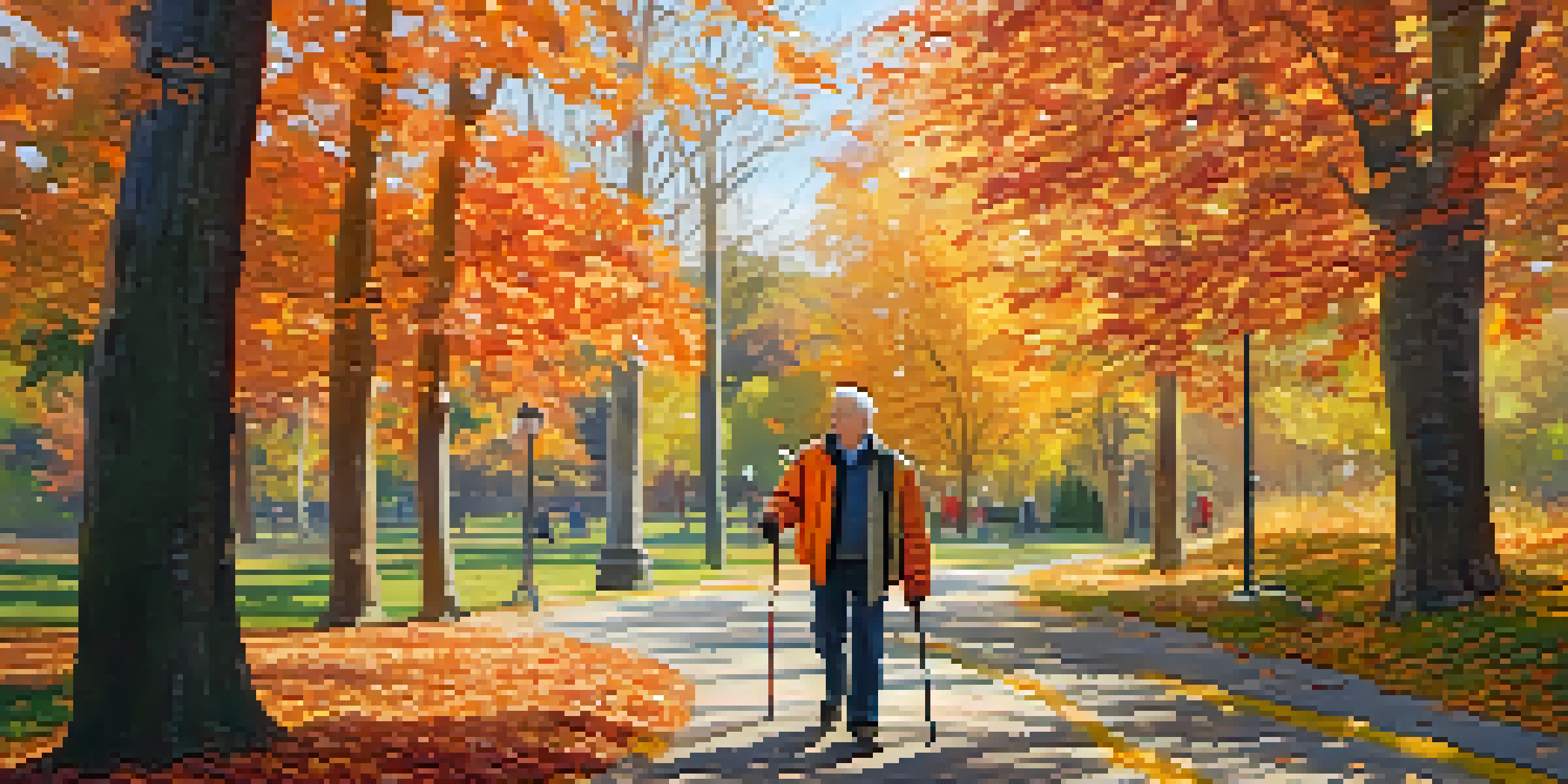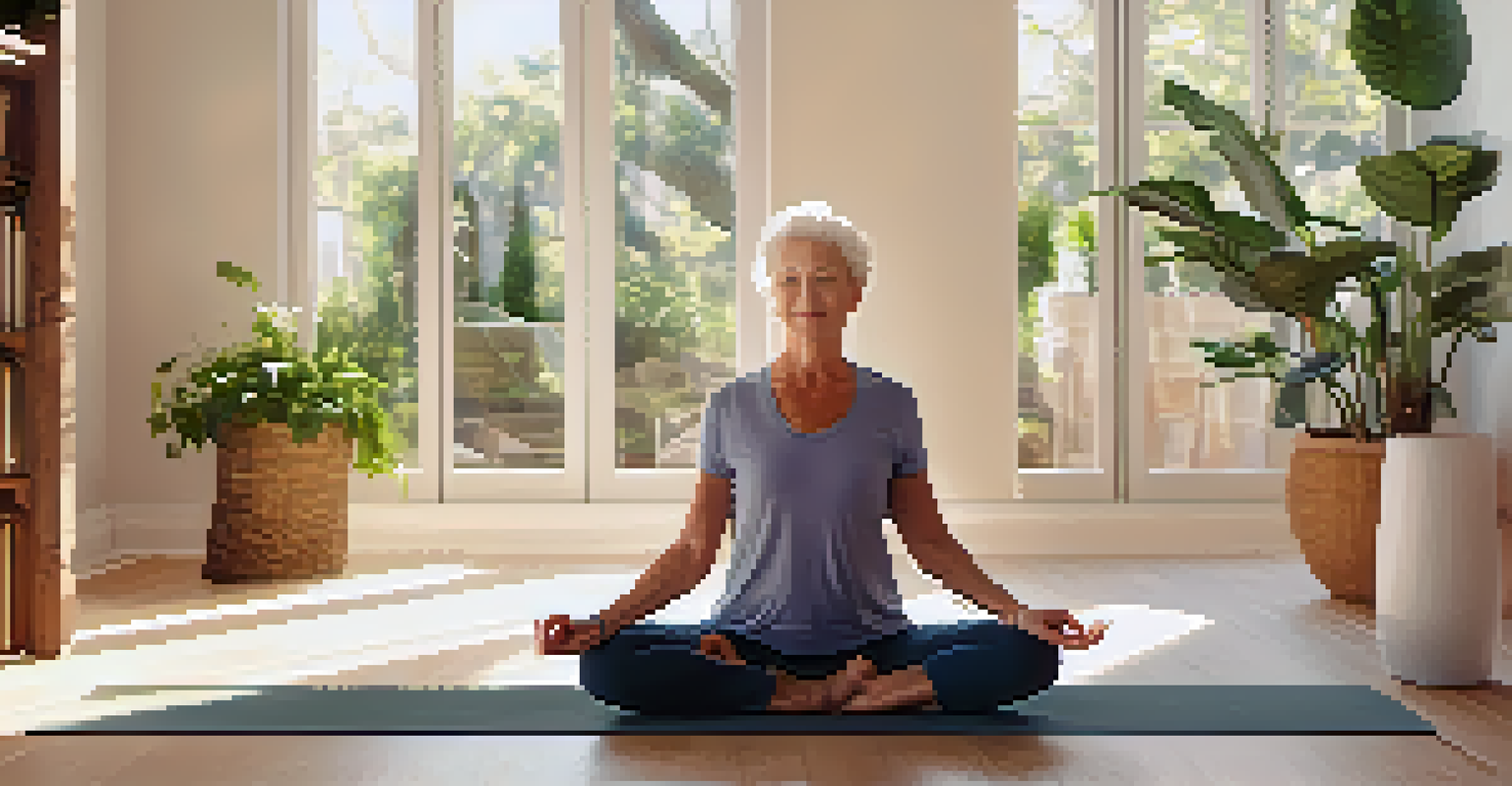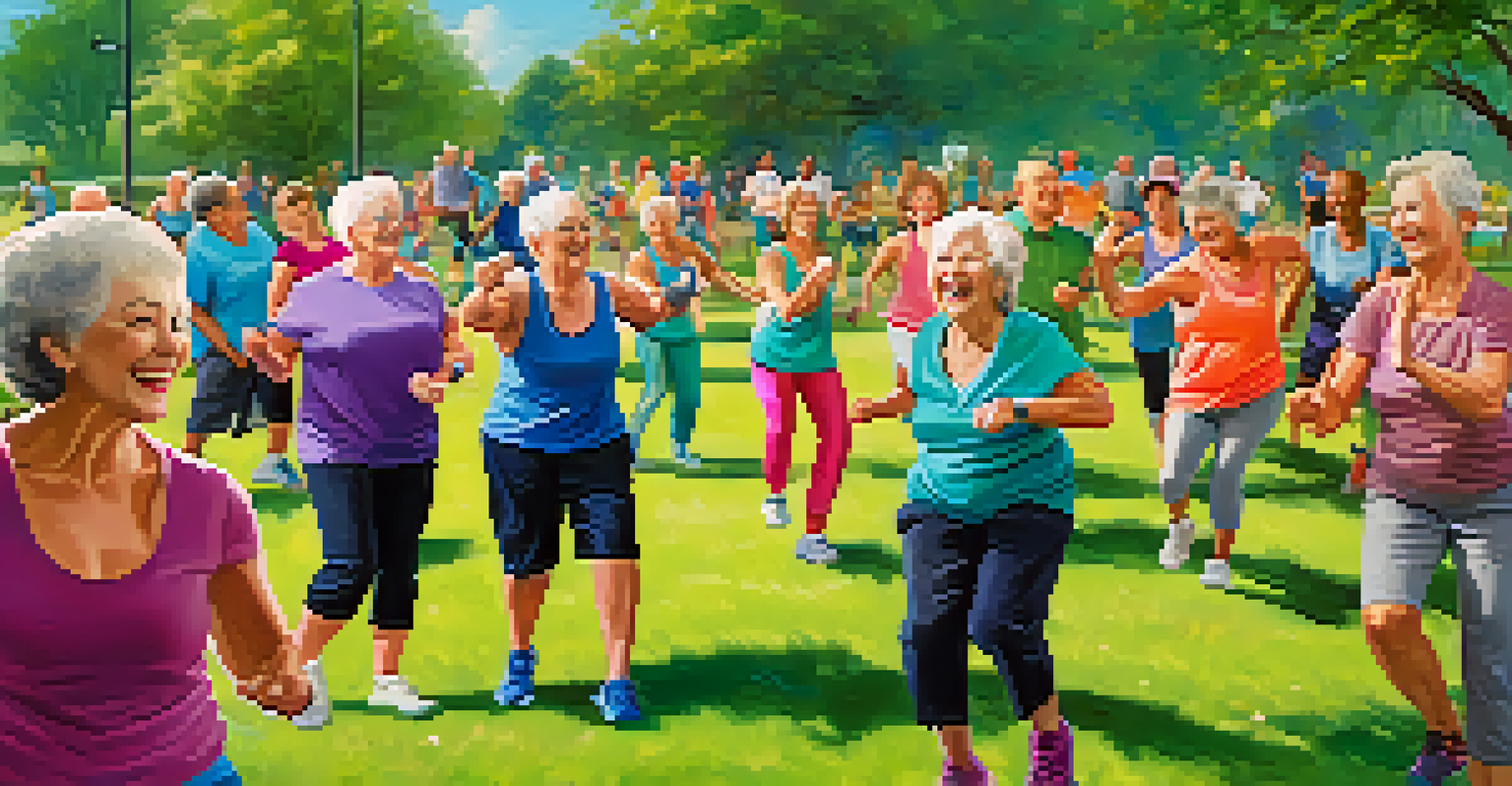The Importance of Physical Activity for Older Adults

Understanding the Need for Physical Activity in Older Adults
As we age, our bodies naturally undergo various changes that can affect mobility and overall health. This makes physical activity essential for maintaining strength, flexibility, and balance. Many older adults may feel hesitant to engage in regular exercise, but understanding its importance can help reshape their mindset.
Physical activity is essential to living a healthy and fulfilling life, especially as we age.
Regular physical activity can significantly improve the quality of life for older adults. It helps combat age-related muscle loss, enhances cardiovascular health, and reduces the risk of chronic diseases. By incorporating movement into their daily routine, seniors can experience a renewed sense of vitality and independence.
Moreover, physical activity isn't just about the physical benefits; it also has profound effects on mental health. Activities like walking or joining a fitness class can foster social connections, combat feelings of loneliness, and improve cognitive function, making exercise a twofold advantage.
Physical Activity and Chronic Disease Management
Engaging in regular physical activity plays a crucial role in managing chronic diseases, such as diabetes, hypertension, and arthritis. For seniors, staying active can help regulate blood sugar levels and lower blood pressure, ultimately leading to a healthier lifestyle. This proactive approach can reduce the need for medication in some cases.

Exercise can also improve joint function and reduce pain associated with conditions like arthritis. Simple activities like stretching, swimming, or yoga can help maintain flexibility and mobility, allowing older adults to enjoy their daily activities with less discomfort.
Physical Activity Boosts Health
Engaging in regular exercise helps older adults maintain strength, flexibility, and overall health, improving their quality of life.
Furthermore, maintaining a consistent exercise routine can enhance the immune system, making older adults less susceptible to illnesses. When the body is strong and resilient, it can better fight off infections and recover from sickness, leading to an overall improvement in health.
Boosting Mental Health Through Physical Activity
Physical activity is not only beneficial for the body but also for the mind. Exercise triggers the release of endorphins, often referred to as 'feel-good' hormones, which can alleviate feelings of stress and anxiety. For older adults, this can be especially important in combating the mental challenges that come with aging.
Movement is a medicine for creating change in a person's physical, emotional, and mental states.
Participating in group activities, such as dance classes or walking clubs, can also provide a sense of community and belonging. These social interactions can help reduce feelings of isolation, which is a common issue among seniors. The combination of exercise and social engagement creates a powerful antidote to loneliness.
Additionally, staying physically active may help improve cognitive function and reduce the risk of dementia. Research suggests that regular exercise can increase brain plasticity and enhance memory retention, making it an essential component of mental health for older adults.
Types of Physical Activities Suitable for Older Adults
When considering physical activity, it's vital for older adults to choose exercises that match their abilities and interests. Low-impact activities such as walking, swimming, and gardening are excellent starting points for many seniors. These activities are gentle on the joints while still providing essential movement and exercise.
Strength training is another beneficial option, as it helps build muscle mass and maintain bone density. Using resistance bands or light weights can be a safe way to incorporate strength exercises into a routine. Many community centers offer classes specifically designed for older adults, making it easy to get started.
Mental Health Benefits of Exercise
Physical activity not only enhances physical well-being but also alleviates stress, reduces feelings of loneliness, and improves cognitive function.
Balance and flexibility exercises, such as tai chi or yoga, can further enhance stability and prevent falls. These practices not only improve physical capabilities but also promote relaxation and mindfulness, contributing to overall well-being.
Setting Realistic Goals for Physical Activity
Setting realistic and achievable goals is crucial for maintaining motivation in any physical activity routine. For older adults, it’s important to start small and gradually increase the intensity and duration of exercises. Simple goals, like walking for 10 minutes a day, can lead to significant improvements over time.
Keeping track of progress can also boost motivation. Whether it's through a journal or an app, seeing improvements in endurance or strength can encourage seniors to stick with their routines. Celebrating small victories along the way helps create a sense of accomplishment.
Additionally, involving friends or family members in the activity can make exercising more enjoyable. Having a workout buddy not only provides accountability but also adds a social element that can enhance the experience.
Overcoming Barriers to Physical Activity for Seniors
Many older adults may face barriers that prevent them from engaging in regular physical activity. Common obstacles include fear of injury, lack of motivation, or limited access to facilities. Addressing these concerns is crucial for fostering a more active lifestyle.
To overcome the fear of injury, it's essential for seniors to consult with healthcare providers before starting any new exercise program. They can provide tailored recommendations and help dispel any myths surrounding exercise safety. Understanding that modifications can be made to accommodate individual needs can also build confidence.
Set Realistic Exercise Goals
Starting with achievable goals and tracking progress can motivate older adults to maintain an active lifestyle while overcoming barriers.
Creating a supportive environment is key to encouraging physical activity. Family members and friends can play a significant role by offering encouragement and even joining in activities together. Additionally, finding local community programs that cater to older adults can provide valuable resources and camaraderie.
The Lifelong Benefits of Staying Active as You Age
The benefits of physical activity extend far beyond immediate health improvements; they can lead to a more fulfilling and vibrant life as one ages. Staying active can enhance longevity by reducing the risk of chronic diseases and improving overall health. Many older adults find that leading an active lifestyle allows them to maintain independence longer.
Moreover, physical activity can significantly improve mood and increase energy levels, making daily tasks feel less daunting. This boost in energy can translate to a more active social life, allowing seniors to enjoy outings and activities they love.

Ultimately, making physical activity a priority is a gift that keeps on giving. As older adults embrace movement, they not only improve their physical health but also enrich their mental and emotional well-being, paving the way for a happier, healthier life.